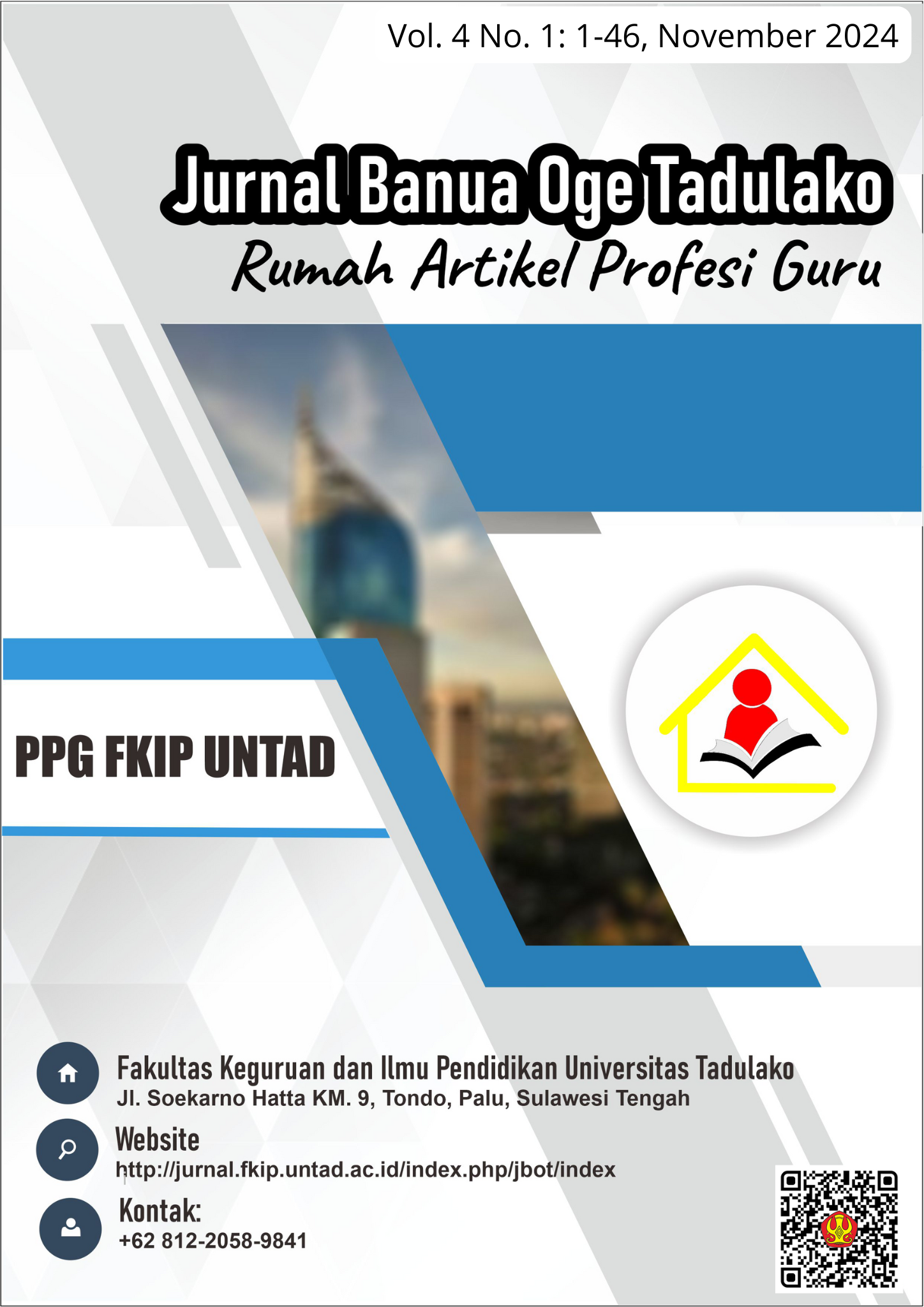Improving student learning outcomes in science content by using the student teams achievement division (stad) learning model in class v
Improving student learning outcomes in science content by using the student teams achievement division (stad) learning model in class v
DOI:
https://doi.org/10.22487/jbot.v4i1.2951Keywords:
learning outcomes, STAD's cooperative learning modelAbstract
The problem in this study is the low learning outcomes of students in the content of science lessons, namely in magnetic force material. The research carried out aims to improve student learning outcomes by using a STAD (Student Teams Achivement Divission) type cooperative learning model in the content of science lessons, namely on magnetic force material in grade V of SD Negeri No. 108306 Tanjung Garbus 2019-2020. This research is a Class Action (PTK) research. The subjects in this class action research are grade V students of SD Negeri No. 108306 Tanjung Garbus which consists of 32 students consisting of 14 girls and 18 male students. The implementation of the action is carried out for 2 cycles, where each cycle is held twice in meetings. So in 2 cycles there are 4 meetings. In each cycle, 4 stages are carried out, namely Planning, Implementation, Observation and Reflection. The data collection technique used in this study is to use quantitative data in the form of tests and qualitative data in the form of observations. The results of the study showed that from the provision of actions using the STAD (Student Teams Achievement Division) type cooperative learning model starting from the initial test, cycle I, and cycle II, the level of student learning completeness was obtained, namely in the initial test the average score was 48.90 with a learning completeness of 18.75%, or 6 students who completed learning, at the time of the first cycle test the average student score increased to 69.84 with a learning completeness of 53.125% or 17 students who completed the learning process. completeness in learning, this proves that there is an increase in the completeness of student learning outcomes, which is as much as 34.375%, at the time of the second cycle test reached 89.06 with a learning completeness of 93.75% or 30 students who completed learning, there was an increase from cycle I to cycle II which was as much as 40.625%. This proves that there is an increase in the completeness of student learning outcomes starting from the provision of initial tests, cycle I and cycle II. This means that the results obtained by students in the second cycle test have reached a classical level of completeness. From the actions and analysis carried out, it can be concluded that by using the STAD (Student Teams Achievement Division) type cooperative learning model, students are more actively involved in the learning process. Thus, science learning using the Student Teams Achivement Divission (STAD) learning model in grade V of SD Negeri No. 108306 Tanjung Garbus can improve student learning outcomes.
References
Pemerintah Pusat, Undang-undang (UU) Nomor 20 Tahun 2003 tentang Sistem Pendidikan Nasional. Indonesia, 2003.
Menteri Pendidikan Nasional, STANDAR ISI UNTUK SATUAN PENDIDIKAN DASAR DAN MENENGAH. Indonesia, 2006.
Downloads
Published
Issue
Section
License
Copyright (c) 2025 SELLY TIARA SELLY TIARA

This work is licensed under a Creative Commons Attribution-ShareAlike 4.0 International License.










